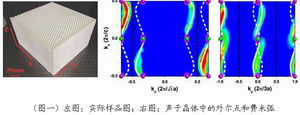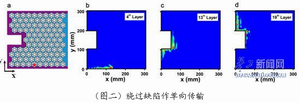October 2nd, 2017, a research work entitled Weyl points and Fermi arcs in a chiral phononic crystal, which authored by Li Feng, Huang Xueqin (equal contribution as the 1st author), Lu Jiuyang, Ma Jiahong, and Liu Zhengyou, was published in Nature Physics. This is the first time that faculty from our school have research work published in Nature Physics.

In 1929, German physicist Weyl predicted the possibility of the existence of Weyl fermions, but for the next 80 years physicists have failed to detect the presence of Weyl fermions. Until recently, the unique dispersion relation of Weyl fermions has been observed in Weyl half metals and photonic crystals, respectively. The behavior of electrons or light around the Weyl point is similar to that of Weyl fermions, so it is regarded as a Weyl fermion in the form of quasi particles.
Inspired by this, Professor Chen of Hong Kong University Science & Technology has predicted theoretically the existence of the Weyl point in phononic crystals. Since phononic crystals are generally of macroscopic scale, the study of acoustic external point can expand the physics from microscopic to macroscopic, and is more convenient for experimental observation. Although the Weyl point in phononic crystal has been proposed theoretically, it has not been experimentally confirmed due to the challenge of the experiment.
Li Feng and Huang Xueqin's team from South China University of Technology (SCUT), prepared a structural unit of the chiral phononic crystal with careful design (shown in figures below, left), and clearly observed the Weyl point, and corresponding Fermi arc (white lines, below).

The research team further demonstrated the novel transmission behavior of surface states in Weyl phonon crystals. Due to topological protection, the propagation of surface states is unidirectional. It can be seen from Fig. 2 (below) that the surface state can bypass the defect and realize barrier free propagation, and verify the topological properties of the Weyl point. The realization of Weyl phononic crystal suggests possible application of topological physics in the fields of acoustic communication and surface acoustic wave devices.

Of note, both Li Feng and Huang Xueqin joined SCUT under the outstanding talent and Team program, and the research work is sponsored by the National Natural Science Foundation and Guangdong Pearl River talent program.



